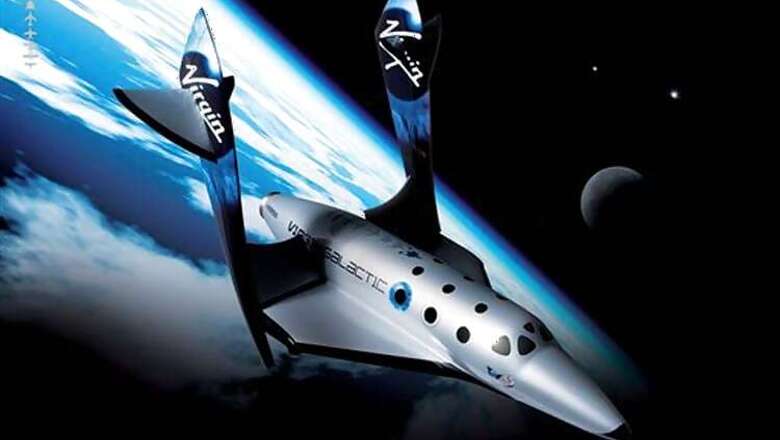
views
Los Angeles: Space tourism projects leaped off the drawing board when a $10 million prize was offered as an incentive for private development of manned rockets, but it took years to make a winner. Many more years have passed since, but the only space tourists have been a few wealthy people who paid millions of dollars for trips aboard Russian rockets to the International Space Station. Things to know about space tourism:
X PRIZE
In 1995, the St. Louis-based X Prize Foundation conceived the idea of a $10 million reward for development of a privately financed, reusable spaceship capable of carrying three people to an altitude of 62 miles twice within two weeks.
The X Prize announcement the following year was timed to an anniversary of Charles Lindbergh's nonstop flight from New York to Paris aboard the Spirit of St. Louis in 1927, which won the aviator the $25,000 Orteig Prize that was offered in 1919 for the trans-Atlantic flight.
At the time the X Prize was announced, maverick aerospace designer Burt Rutan, creator of the Voyager aircraft that circled the globe in 1986, speculated that the $10 million prize could be won in three years. In fact it took more than eight.
SPACESHIPONE
The Kittyhawk moment for private manned spaceflight occurred on June 21, 2004, when SpaceShipOne — designed by Rutan and funded by Microsoft co-founder Paul Allen — soared more than 62 miles above the California desert and then glided to a landing at Mojave Airport as crowds cheered.
Standing by the stubby-winged, three-seat spacecraft, test pilot Mike Melvill said seeing the curvature of the Earth from that altitude was "almost a religious experience."
The feat placed SpaceShipOne in the lead among more than two dozen competitors for the $10 million reward, by then renamed the Ansari X Prize after the Ansari family of Dallas, which made its wealth in telecommunications and funded the prize.
Rutan subsequently announced he would go for the prize later that year.
SpaceShipOne launched again on Sept. 29, reaching the required altitude after Melvill ignored a request to abort because the craft went into a series of rolls. Well within the two-week period required by the contest, the craft launched on Oct. 4 with test pilot Brian Binnie at the controls. After it landed, X Prize founder Peter Diamandis announced the altitude was official and the SpaceShipOne team clinched the prize.
WHERE DOES SPACE BEGIN?
Earth's atmosphere does not abruptly stop and the vacuum of space begin, but the altitude of 62 miles (100 kilometers) is accepted as a useful boundary line by the Federation Aeronautique Internationale, a keeper of flight records.
Known as the Karman line, it is used to distinguish between aeronautics and astronautics. Melvill, the SpaceShipOne pilot, received the first commercial astronaut wings awarded by the Federal Aviation Administration after surpassing the line.
The US Air Force, however, awarded astronaut wings to five of its pilots who flew above 50 miles decades ago in X-15 rocket planes used for hypersonic research. Three civilian X-15 pilots who also surpassed that altitude were belatedly awarded astronaut wings in 2005, two posthumously.
The first American in space, Mercury astronaut Alan Shepard, rocketed to an altitude of 116 miles on May 5, 1961.
SPACEPORT
In a remote stretch of desert in southern New Mexico, officials at Spaceport America — the world's first futuristic hangar and runway designed specifically for commercial space travel — have been anxiously awaiting Virgin Galactic.
Taxpayers footed the nearly quarter-billion-dollar bill for the spaceport years ago in hopes of it being a gateway for space tourism. With Virgin as the anchor tenant, the delay in flights has made it tough for the spaceport to get off the ground.
Spaceport director Christine Anderson can't wait to attend the upcoming unveiling of SpaceShipTwo. She said seeing it in person will make the progress even more real.
"I'm excited they have a spaceship built and things are looking forward and it's full speed ahead for them," she said.
Anderson acknowledged there's no question that Virgin Galactic is the linchpin for the state's space tourism aspirations. With flights expected to start sometime in 2017, the spaceport expects to see as many as 100,000 visitors by 2020.




















Comments
0 comment